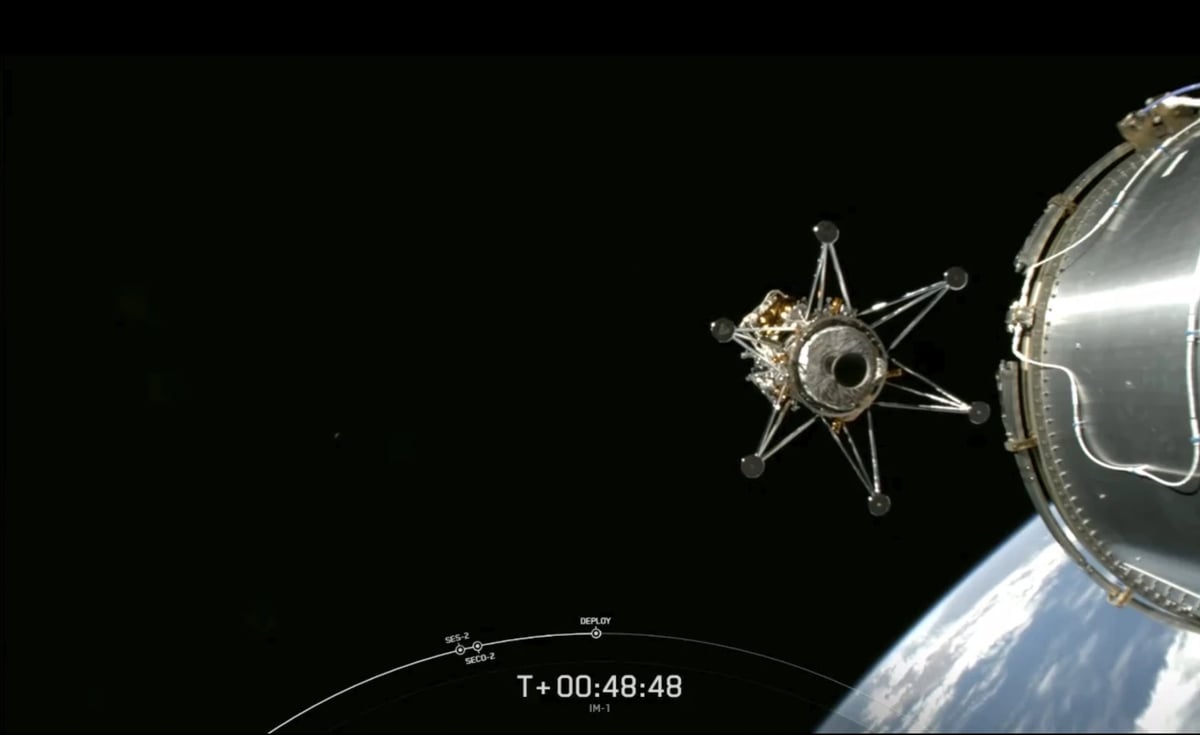Ten minutes of silenceOne of the technology tests on the Odysseus lander, NASA’s Navigation Doppler Lidar experiment or NDL, appears to have proved crucial to the lander’s success.As the lander neared the surface, the company realised its navigation systems had a problem. NASA’s NDL experiment is serendipitously designed to test precision landing techniques for future missions. It seems that at the last second, engineers bodged together a solution that involved feeding necessary data from NDL to the lander.Ten minutes of silence followed before a weak signal was detected from Odysseus. Applause thundered through the mission control room. NASA’s administrator released a video congratulating everyone for returning America to the Moon.It has since become clear the lander is not oriented perfectly upright. The solar panels are generating sufficient power and the team is slowly receiving the first images from the surface.However, it’s likely Odysseus partially toppled over upon landing. Fortunately, at the time of writing, it seems most of the science payload may yet be deployed as it’s on the side of the lander facing upwards. The unlucky payload element facing downwards is a privately contributed artwork connected to NFTs.The lander is now likely to survive for at least a week before the Sun sets on the landing site and a dark, frigid lunar night turns it into another museum piece of human technology frozen in the lunar regolith.Win some, lose someNASA’s commercial approach to stimulating low-cost payload services all but guarantees some failures. But eventually NASA hopes that several commercial launch and landing providers will emerge from the program, along with a few learning experiences.The know-how accumulated at organisations operating hardware in space is at least as important as the development of the hardware itself.The market for commercial lunar payloads remains unclear. Possibly, once the novelty wears off and brands are no longer able to generate buzz by, for example, sending a piece of outdoor clothing to the Moon, this source of funding may dwindle.However, just as today, civil space agencies and taxpayers will continue to fund space exploration to address shared science goals.Ideally, commercial providers will offer NASA an efficient method for testing key technologies needed for its schedule of upcoming scientific robotic missions, as well as human spaceflight in the Artemis program. Australia would also have the opportunity to test hardware at a reduced price.It’s worth noting that US budgetary issues, funding cuts and subsequent lay-offs do threaten these ambitions.
Source link

मुंबई के 10.64 प्रतिशत मतदाताओं के नाम दोहरे हैं: SEC डेटा
मुंबई: महाराष्ट्र राज्य चुनाव आयोग (एसईसी) के द्वारा साझा किए गए डेटा के अनुसार, मुंबई के 1.03 करोड़…




